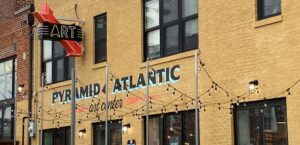From Chapter 19. Claudine vs. the Ants
A few miles later, Hendrik slowed and pulled off the highway onto a dirt track that was blocked by a homespun barb-wire gate. David got out, opened the gate while Hendrik drove through, and closed it behind. There was a muttered acknowledgement when David got back in the car.
The dirt road was mostly smooth and the pace leisurely. A herd of antelope came springing out of the sagebrush, dashed in front of them as they gawked, and bounded away in the desert until the last white rump disappeared. They had arrived so suddenly and disappeared so quickly that the fresh print in memory dried and faded. Hendrik resumed driving.
There were a few more gates to pass through, and the trail was rocky at times. It followed a creek up into the mountains, past a crumbling stone building, an abandoned ranch, through some dodgy puddles, deeper into the range. After a few miles, they came to place where another canyon full of aspen joined from the side. The trail ahead looked too much for the Town & Country. We walk from here, Hendrik announced.
Outside, a thin veil of clouds turned the sky white, suffusing a burning sun beyond. Among the aspens, they found carvings in the white bark: initials, dates and then figures. A rough sketch of a ranch house. Elke asked if Indians had done this.
Basque shepherds, Hendrik answered. In summer, they camped in the mountains with their herds.
Sunlight burst momentarily through the gauze, briefly igniting the white trunks, spring’s emerging aspen leaves. Hendrik found Roslyn alone, admiring a primitive depiction of a woman in high heels and a garter belt, etched by a lonely Basque. Not so easy to carve into an aspen tree, but the intent seemed clear. Probably not the shepherd’s mother. And likely not that long ago, given the lifespan of aspen.
Is she your type? Roslyn asked, teasing.
I might have seen her once in a bathroom stall, Hendrik replied.
It got lonely with just those sheep, she noted, smiling his way. Too obvious, maybe.
Hendrik cleared his throat. Actually, I have … I have a sort of confession to make.
For one beat, he had her attention and was about to plow ahead. But her eyes left him, glancing over his shoulder to something behind him. A different look in her eyes when they came back to him.
I’m not the Mother Superior around here, she said, half-joking.
They weren’t alone anymore. Someone behind him.
What’s he got to confess? Finn intruded.
No. It’s nothing, Hendrik fumbled, abandoning the thing he’d spent much of the day talking himself into. It’s just that shepherds get a bum rap.
Boys will be boys, she said.
And sheep be nervous, Finn added.
At this point, it started to snow. Not seriously, mind you, it was one of those faerie blizzards, filtering down on a wave of colder air, drifting through the aspen grove. Hendrik looked up into it, the sun glimmering through the translucence.
Geez, Roslyn said. This is some desert. Wearing a sweater with no jacket, she shivered.
Hendrik at that point thought he had dodged disaster and hoped like hell that Roslyn would not at some later date ask him what he was about to tell her when Finn walked in on them. He should forget the whole thing, keep his trap shut.
The pilgrims regathered. Given the way the weather was turning, Roslyn wanted to stay in the car. It still didn’t look like a real snowstorm to Hendrik, just a casual flirtation. He said he would keep hiking and would have been happy to go it alone, but David and Elke joined him. Hendrik was relieved that Roslyn was staying at the car, less so that Finn was staying with her.
He led David and Elke deeper into the canyon.
More flurries mixed with sunlight. All the same, it was a good walk in a narrow, eerie wilderness. The higher they climbed, the more snow. At first, banks of it in shadows, then a soggy carpet on the trail itself.
Hendrik was struck how upbeat Elke had become, and supposed she had some kind of crush on David. It was a mystery to him that David – who was a such a hopeless hermit in college, who couldn’t cope with the girls they’d picked up on the aborted spring break – had become a magnet for beautiful women. This further confirmed the one truth Hendrik had discovered while he was still in college: that despite his study of philosophy, he didn’t know shit from a tree. He was going to be a half-assed lawyer, but at least no one would expect him to know anything about life.
They reached the place where a new stream joined from the west, winding deeper in the mountains. According to the gazetteer, the petroglyphs would be up this canyon, not too far away.
The trail clung to a stream. It squeaked underfoot where the snow turned the gravel into something like wet concrete. Spring flowers broke the snow in spots, melting a skirt of mud around them. As they rounded a large rocky prominence, there was a deep, wide cave about thirty yards up the hill.
This is the place, Hendrik announced, and he scrambled up the loose footing at the base of the mountain. There was little to hold onto. When he reached the lip of the cave, its ceiling had been blackened by smoke. Instead of petroglyphs, there were painted designs on the rock, pictographs.
David and Elke reached the cave and began jabbering about the whimsy of the designs, a sign in red that looked like a scarecrow, daubs of red and white. It was not the most spectacular display of rock art they had seen but the two of them were absorbed in it all the same. Hendrik wondered how two people who had only met a few days ago, with little in common, came to have such an understanding of one another. They didn’t try to translate what they found, only respond to it.
And the philosopher-turned-attorney understood that this simple stimulus left centuries ago by an anonymous, unlettered hunter-gatherer, had proved to be more permanent than most other human expression. Even in this remote spot nearly off the edge of the map, people were still reading signs left by someone who probably didn’t waste much energy wondering how big his or her audience would be. Or what people would think of their work.
Hendrik trudged down the gravelly slope to the trail, paused to look back amused by the picture of the cave temporarily inhabited by his college mate and the liberated suburbanite, surrounded by whispering sagebrush. He felt pride in the pilgrimage, even if he was not coming within a light year of understanding anything about rock art. I should study shepherd porn, he thought.
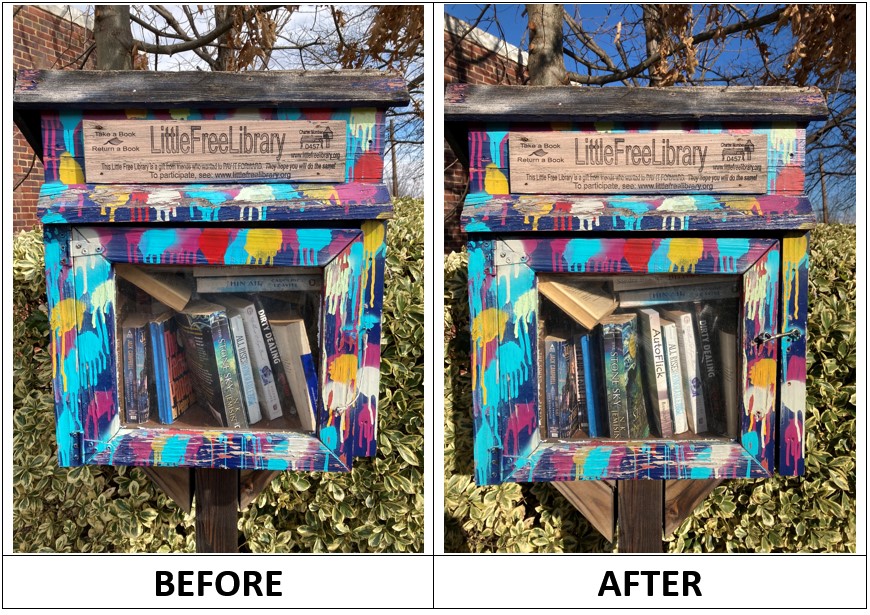


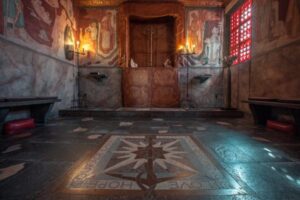
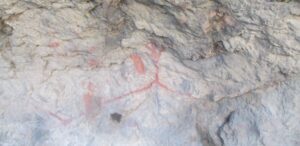
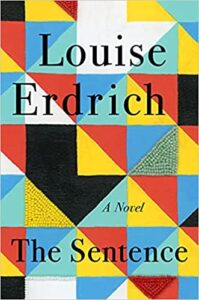 A ghost leads a modern Native American woman to find herself.
A ghost leads a modern Native American woman to find herself.